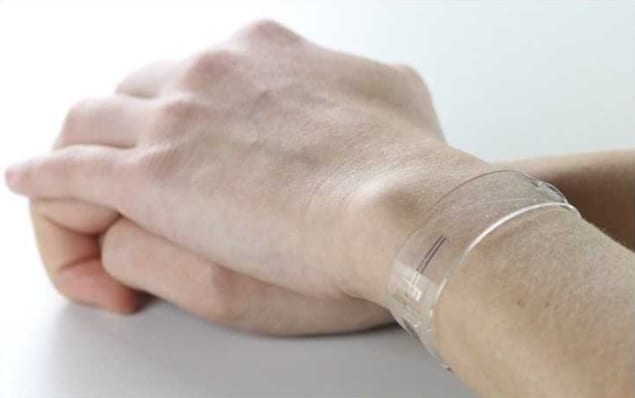
A third of adults are consistently not getting enough exercise, reported the World Health Organisation in a 2018 study. In addition, obesity has been claimed to be a national emergency in the UK.
The use of consumer based health and wellness trackers such as smart watches or smart clothing has the potential to increase physical activity participation. Many of these devices noninvasively track vital health signs by optical detection. However, this technology is limited by the need for rigid materials. To overcome this, Emre Polat et al. have developed a new class of flexible and transparent wearables based on graphene sensitized with semiconducting quantum dots.
The new technology can successfully measure heart rate and oxygen saturation. It also has the potential to measure blood pressure and cardiac output, whilst maintaining its flexible and transparent form. The group has used the approach to develop a plethora of prototype fitness trackers such as a heart-rate monitoring bracelet and a wireless ultraviolet (UV) monitoring patch, which informs the user of their current UV exposure and recommended remaining exposure time via a mobile phone app.

Monitoring heart rate
Health and wellness trackers based on optical absorption can operate in two modes. The flexible heart-rate bracelet operated using reflectance mode. Here, an integrated green LED is shone through the skin and onto the user’s blood vessels. The cardiac cycle changes the volume of the vessels, which modulates how much light is reflected back towards the photodetector. In this way, the heart rate can be reliably and accurately extracted from the user’s wrist. Transmission mode is used to operate the mobile phone integrated health patch in a similar way. However, instead of using an LED, the patch uses ambient light passing through the thumb tissue to measure the changes in cardiac cycle.

Wearable patches could ‘decode’ sweat
Discrete fitness trackers
Whilst health and wellness trackers based on optical detection have been on the market for some time, conformable sensors that are aesthetically pleasing have, until now, been next to non-existent. By using graphene in their new devices, Polat’s team have managed to develop fitness trackers that are transparent and flexible, allowing for the development of a range of discrete fitness trackers. In addition, these low-cost devices have the potential for wireless charging, and offer other benefits key for this type of detector such as broadband wavelength sensitivity. This extends the number of vital signs that can be measured.
The full article can be found in Science Advances.



